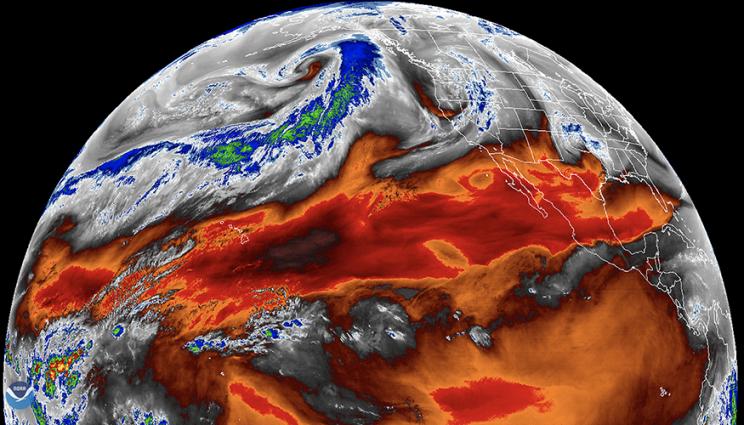
New research by Lawrence Livermore National Laboratory (LLNL) climate scientists and collaborators shows that satellite measurements of the temperature of the troposphere (the lowest region of the atmosphere) may have underestimated global warming over the last 40 years.
The research appears in the Journal of Climate
The team studied four different properties of tropical climate change. Each property is a ratio between trends in two “complementary” variables. Complementary variables — like tropical temperature and moisture — are expected to show correlated behavior. This correlated behavior is governed by basic, well-understood physical processes.
The first three properties considered by the team involved relationships between tropical temperature and tropical water vapor (WV). WV trends were compared with trends in sea surface temperature (SST), lower tropospheric temperature (TLT) and mid- to upper tropospheric temperature (TMT). The fourth property was the ratio between TMT and SST trends. All four ratios are tightly constrained in climate model simulations, despite model differences in climate sensitivity, external forcings and natural variability. In contrast, each ratio exhibits a large range when calculated with observations. Model trend ratios between WV and temperature were closest to observed ratios when the latter are calculated with datasets exhibiting larger tropical warming of the ocean surface and troposphere.
For the TMT/SST ratio, model-data consistency depended on the combination of observations used to estimate TMT and SST trends. Observational datasets with larger warming of the tropical ocean surface yielded TMT/SST ratios that were in better agreement with model results.
“Such comparisons across complementary measurements can shed light on the credibility of different datasets,” according to LLNL’s Stephen Po-Chedley, who contributed to this study. “This work shows that careful intercomparison of different geophysical fields may help us determine historical changes in climate with greater precision.”
If climate model expectations of these relationships between tropical temperature and moisture are realistic, the findings reflect either a systematic low bias in satellite tropospheric temperature trends or an overestimate of the observed atmospheric moistening signal.
“It is currently difficult to determine which interpretation is more credible,” said LLNL climate scientist Ben Santer, lead author of the paper. “But our analysis reveals that several observational datasets — particularly those with the smallest values of ocean surface warming and tropospheric warming — appear to be at odds with other, independently measured complementary variables.”
Other Livermore scientists include Jeffrey Painter and Mark Zelinka. The LLNL team collaborated with Carl Mears and Frank Wentz from Remote Sensing Systems, John Fyfe and Nathan Gillett from the Canadian Centre for Climate Modelling and Analysis, Environment and Climate Change, Qiang Fu from the University of Washington, Susan Solomon from the Massachusetts Institute of Technology, Andrea Steiner from the University of Graz, Austria, and Cheng-Zhi Zou from the National Environmental Satellite, Data and Information Service at the National Oceanic and Atmospheric Administration. Work at LLNL was funded by the Department of Energy’s Regional and Global Model Analysis Program-area in the Earth and Environmental Systems Sciences Division and by several LDRD grants.





